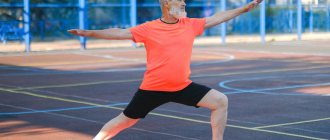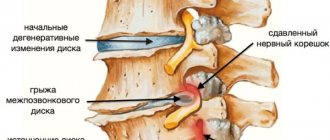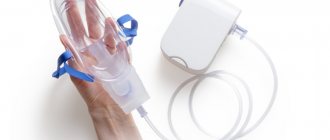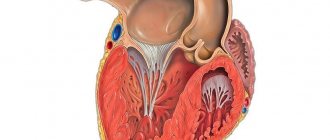One of the additional treatment methods for hypertension is physical therapy, which allows patients to restore their vitality. In combination with conservative treatment and diet therapy, moderate exercise will help normalize blood circulation, cardiac activity, and also reduce the risk of complications. Experts have developed special exercises for hypertension that prevent excessive stress on a weakened body. Before starting physical therapy, patients should familiarize themselves with the methods, indications and contraindications for exercise.
Therapeutic properties of exercise therapy for hypertension
Exercise therapy for hypertension is an effective means of preventing complications typical for the disease. A properly selected complex with a moderate dose of exercise can strengthen the cardiovascular system, as well as reduce the risk of heart attack and stroke.
Before starting sports, it is necessary to establish the stage of the disease and identify concomitant pathologies in order to avoid negative phenomena.
Therapeutic exercise for hypertension has the following beneficial properties:
- stabilization of blood pressure indicators;
- reducing the concentration of cholesterol in the bloodstream;
- acceleration of metabolic processes;
- expansion of the lumen of blood vessels;
- restoration of blood circulation;
- increasing the elasticity of arteries;
- reducing the risk of attacks of arterial hypertension.
Regular exercise leads to strengthening of the vestibular apparatus, resulting in a reduction in attacks of headaches and dizziness. With the help of physical exercises, you can stabilize blood pressure without drugs in the early stages of CVD (heart and vascular diseases).
Most patients are interested in what physical exercises can be done with hypertension in order to achieve a decrease in blood pressure and avoid fatigue. Therapeutic exercises for hypertensive patients should be comprehensive, so it should include general strengthening and special exercises that are indicated for diseases of the heart and blood vessels.
Types of exercise therapy for hypertension:
- Special complex. Includes breathing and relaxation exercises that help smoothly lower blood pressure.
- General complex. It consists of balance and coordination exercises that are performed with a large amplitude, but without pronounced effort. With elevated blood pressure, vestibular disorders are eliminated after a long course.
What are the benefits of physical therapy for hypertension?
Physical activity is the main part of a drug-free program for overcoming hypertension. Loads increase the intensity of muscle contractions. This reduces the lack of microvibration, and toxins and waste products are more actively removed from the body. As a result, the pressure in the kidneys decreases, immunity increases, and atherosclerotic plaques, which adversely affect the state of the body, cease to form on the walls of blood vessels. All these conditions create conditions for lowering blood pressure.
Important! Before starting any kind of exercise, you should consult your doctor to rule out contraindications.
Execution Features
At the beginning of the therapeutic course, you should perform simple physical training techniques without excessive stress on the muscular system, which are complemented by breathing and relaxation techniques.
In addition to special physical training, hypertensive patients are recommended to take walks and visit the swimming pool.
At the first stage of hypertension, when well-being improves and tolerance to stress increases, the intensity of exercise gradually increases. Light running and gymnastics are added to the complex, which involve all major muscle groups. A month after the start of exercise therapy, it is performed in full, and the number of repetitions is increased to 8–9 times.
Exercises for stage 2 hypertension become more complicated only after a three-week course. Patients should be careful about heavy loads and avoid running. The number of repetitions increases up to 8 times. And only after a month, on the recommendation of your doctor, you can start running.
No ads 1
In the second and third stages of the pathology, therapeutic exercises can be carried out in a hospital, even when the patient is recommended to rest in bed. Simple exercises are prescribed that involve the muscles of the lower and upper extremities. To train vascular reactions and balance, they resort to the technique of alternately changing the position of the head and neck in space. Breathing techniques can also be performed in a supine position, but to improve pulmonary circulation it is necessary to elevate the upper shoulder girdle.
If your general condition worsens, your heart rate increases to more than 100 beats/min, and does not stabilize after 10 minutes of rest, you should avoid intense exercise and switch to breathing exercises.
Benefits of physical activity
By performing simple physical therapy exercises, you can highlight the positive aspects for your health:
- Simple exercises help normalize the functioning of the heart and blood vessels, and increase the capabilities of the respiratory system. The elasticity of blood vessels improves, and the amount of “bad” cholesterol decreases.
- Metabolic processes are improved, harmful metabolic products are eliminated faster, and the load on the kidneys is reduced.
- The immune system is strengthened, which is also the prevention of seasonal colds.
- Thanks to deep and rapid breathing during exercise, lung ventilation improves.
- Exercising is an excellent way to prevent constipation.
- Fat tissue is gradually replaced by muscle tissue, and weight returns to normal.
- Increasing physical activity promotes healthy sleep and prevents stress.
- Joints become more elastic, bones become stronger.
- Memory improves by improving oxygen supply to the brain.
- Women endure menopause more easily, while men maintain potency throughout their lives.
Breathing exercises
The most effective and efficient method for strengthening the vascular system is breathing exercises developed by Strelnikova. The gymnastic complex can be used both for the treatment and prevention of arterial hypertension. To achieve a healing effect, therapeutic exercises for hypertension must be regular, systematic and long-lasting, since the minimum course is 2 months.
Breathing exercise saturates the body with oxygen, which activates the activity of the vascular system and myocardium
Breathing exercises are done in a standing position; for older people, you can take a sitting position. The number of repetitions depends on the patient’s level of preparedness. It is recommended to start with 6 repetitions, gradually increasing the load. Between cycles you need to maintain intervals of 8-10 seconds.
This method includes the following set of exercises for hypertension:
- "Palms." In a standing position, place your arms parallel to the floor, then you need to bend them at the elbow joint so that your palms face forward. Clench your palms into fists, and each squeeze should be accompanied by a short and strong inhalation, and exhalation should be done slowly and calmly.
- "Pump". In a standing position, you need to lower your arms along with your shoulder joints, relaxing them as much as possible. Round your spine and bend slowly, holding the bottom position. Inhale sharply and exhale smoothly.
- "Epaulettes." Place your palms bent into fists at your waist, inhale sharply and straighten them down, unclenching your fingers and spreading them as far apart as possible. The muscles of the forearms and hands should be in good shape. As you exhale, the arms return to their original position.
- “Hug your shoulders.” Arms bent at the elbow joints should be crossed over the chest. As you inhale sharply, hug yourself as much as possible, and as you exhale, return to the starting position.
- "Head turns." Turn your head to the left and right, so that each movement is accompanied by a powerful inhalation. Exhale through the nose calmly.
Breathing exercises using this method can be used after a hypertensive crisis, when strength training is contraindicated, and it is recommended to reduce the number of repetitions and perform everything in a sitting position.
Ideal scheme
Warm-up is the first stage of any workout. For those suffering from hypertension, it is especially important, since during warm-up the blood vessels dilate, which means it will be easier for the heart to pump blood through them. In addition, gradually entering the rhythm will allow the heart muscle to smoothly get involved in the movement and not be overloaded from the very first steps.
Recommended time: 5–8 minutes.
What to do: walk at a moderate pace (you can stand still), move your arms and legs in different directions, bend and unbend them, squat shallowly, raise your legs, turn your body, rotate your head and pelvis.
What not to do: sudden swings of arms and legs, low bends, throwing back the head, jumping.
What to pay attention to: headache, spots before the eyes - a reason to make the warm-up even more relaxed. The main part is aerobic training , that is, movements during which your body consumes a large amount of oxygen. With its help, muscles receive energy from fat. It is in this part that you should achieve the desired heart rate. An indispensable condition for aerobic training is long, continuous movement.
Recommended time: from 20 minutes.
What to do: walk in place, walk at a relatively fast pace, ride a bike, ski, skate, swim in the pool. Do exercises without weights, like those complexes that are regularly published in our column. Play outdoor games with children. Practice slow dancing.
What you should not do: jump, run, play football and other games where the pace of movement is jerky and the load on the heart changes dramatically. You can move on to all this only after a few months of training, when the cardiovascular system is prepared.
What to pay attention to: breathe as deeply as possible, making sure to include your abdominal muscles as you inhale and exhale. At the same time, you should not breathe quickly and choke. Try to be able to talk while driving. If it doesn’t work out, slow down the pace, but not so much that the intensity of the workout is equal to a friendly chat on a bench. Watch the nasolabial triangle: if the nose, upper lip and chin turn white or turn red - this is a sign of poor vascular function, rather slow down the pace or go to a cool-down.
Strength exercises are the most difficult part, because there are the most restrictions. Dumbbells and other weights should be taken lighter, so that you have enough strength for 15–20 repetitions. Of course, you can completely abandon the power part. But, unfortunately, without it it will not be possible to tone the chest, arms, shoulders, sometimes buttocks and inner thighs.
Recommended time: 10–15 minutes.
What to do: Exercises in which the head does not fall below the chest. Squats, lunges, pull-ups, and push-ups are fine. When pumping your abs, do not lift your legs higher than your head and do not lower your head too low. Use an incline bench or rest your upper body on a large inflatable ball.
What you should not do: bend your head towards your feet, lift your legs above your head from a lying position. You should not take large weights: for women - more than 5, for men - more than 10 kg. To begin with, it is better to do without weights and dumbbells altogether, and use rubber expanders and shock absorbers. Strictly avoid prolonged tension in a static position. Under no circumstances hold your breath while exerting yourself; this will cause your blood pressure to rise. Do the hardest part of the movement while exhaling and remember to take a deep breath.
What to look for: spots before your eyes, shortness of breath, headaches and other signs of ill health are a reason to reduce your weights or even give up strength training for several days or weeks.
Be sure to stretch after your workout! It helps to dilate blood vessels, relax the whole body, and this helps reduce blood pressure. You can even alternate stretching with strength exercises.
Recommended time: 5-7 minutes or 40-60 seconds after each exercise.
What to do: Stretch your arms and legs while standing and sitting. You can do this lying down with a small pillow under your head, but it is better not to lift your legs up. Stretch the body while lying on your back, bend it while lying on your stomach.
What you should not do: use so-called “inverted” yoga asanas for stretching, such as the well-known “birch tree”, “plough”, etc. You can only bend your head to your feet while sitting (not standing). Do not throw your head back when sitting or lying on your stomach. Do dynamic stretching (throw your leg onto the wall bars with a sharp movement, swing your legs, etc.).
What to look for: Muscle and joint discomfort. You should feel slight tension in the muscles, but not pain!
In general, always balance the load with your condition and consult with your doctor. Then physical education will become an additional cure for arterial hypertension.
Personal opinion
Daniil Spivakovsky:
– I don’t play sports. I used to play football, but now I can afford to kick the ball at best once or twice a year. In general, the profession keeps me on my toes. I play from seven to fourteen performances a month. This is quite a serious load: while playing the main role, I can easily lose one and a half kilograms during the performance.
Exercise therapy technique according to Shishon
In most cases, hypertension develops against the background of cervical osteochondrosis, when the vertebrae compress the vessel that carries oxygen to the brain. To compensate for hypoxia, the body uses compensatory mechanisms that provoke an increase in blood pressure and an increase in myocardial contractile activity. To eliminate violations, the Shishon method is widely used, the main tasks of which are to normalize vascular activity and stabilize pressure naturally.
Restoration of motor activity in the cervical region using the Shishon technique
Gymnastics for the vessels of the neck consists of a special set of exercises that a hypertensive patient can perform in the intervals between work, sitting at an office desk. Gymnastics for blood vessels should be carried out regularly; daily exercises will take 20–25 minutes.
Basic exercises for hypertension using a unique method:
- "Metronome". In a sitting position, you need to slowly bow your head, alternately reaching for the left and right shoulder joints. When the tension in the neck muscles reaches its maximum, hold the position for 30 seconds.
- "Goose". In a standing position, fix your chin so that it is parallel to your toes, then move your neck forward. We alternately turn the head to the side, smoothly pulling it towards the shoulder. If you feel discomfort, hold the pose for 20 seconds.
- "Spring". Keep your chin close to your chest and hold for 35 seconds. Slowly moving your neck forward, stretch the top of your head up, and hold the pose for 30 seconds.
- "Looking to the Sky" Smoothly turn your head until discomfort appears, hold for 25 seconds. We repeat the movement in the opposite direction.
- "Frame". This technique is almost similar to the previous version, but the shoulder girdle is involved here. We place the palm of the left hand on the right shoulder, while the elbow should always be parallel to the floor. The unused limb is as relaxed as possible.
- "Fakir". The exercise is performed according to the same algorithm, but the patient needs to bend his arms at the elbow joint, clasping his palms above his head.
- "Heron". Place your palms on your knees, stretch your chin upward, placing both hands behind your back. Hold the pose for 30 seconds. We complement this option with a stretch consisting of smooth turns of the head, which is fixed with a hand on the shoulder.
No ads 2
Morning set of classes
Morning exercise for hypertension promotes the expansion of peripheral vessels, as a result of which hemodynamics improve and blood circulation in the cardiovascular system accelerates.
Morning physical education classes can be done in the fresh air, which will increase the flow of oxygen to the cells
Physical exercises consist of the following gymnastic techniques:
- Sit on a hard surface, always keep your legs extended and your arms along your body. As you inhale, pull your hands towards your head and pull your toes towards you. Perform oscillatory movements with your legs to the sides, while trying to coordinate the movements with the body. The duration of the technique is 3 minutes.
- In a standing position, place your feet shoulder-width apart. Cross the palms of your hands, placing them on the left, with the direction of the left palm up and the right palm down. As you inhale, sharply turn your body to the right, exhale noisily. After a short interval, everything must be repeated for the opposite side.
- Place your feet together, bend your arms behind your back, and cross your fingers. As you inhale deeply, slowly extend your limbs back, lowering your shoulders and squeezing your shoulder blades together.
- Feet shoulder-width apart, hands at the waist. Smoothly make circular movements with your body, then alternately bend in all directions. The head always looks straight, the legs do not bend.
Benefits of swimming for hypertension
According to cardiological studies, swimming is the most effective method in the fight against hypertension. Thus, systematic exercise leads to a decrease in blood pressure and increases the patient’s tolerance to stress. In the initial stages of pathology, swimming can minimize the first manifestations of the disease.
During swimming, the musculoskeletal system experiences less stress than when running.
The therapeutic effect of swimming on the body of a hypertensive patient:
- horizontal position ensures better blood flow in the vessels;
- rhythmicity of movements allows you to stabilize the contractile activity of the myocardium;
- the elasticity of the vascular wall increases;
- metabolic and hemodynamic processes are accelerated;
- blood circulation in peripheral vessels improves;
- Body weight is normalized, thereby reducing cholesterol concentration.
Physical exercises for hypertension in the pool consist of a special swimming technique, when the patient lies on his back, performing parallel strokes with his arms. The method is based on rhythmic alternating swings of the lower and upper limbs, observing deep inhalation and exhalation. In the position on your back, you should alternately perform swings in the water, raising your arms to the level of the armpit, then you need to extend them and push off sharply. With this technique, the lower limbs must alternate short movements to ensure a horizontal position of the body in the water.
Swimming serves as an alternative to antihypertensive therapy in cases where the patient is found to be resistant to the effects of antihypertensive drugs. Positive dynamics are observed with systematic structured exercises in combination with water aerobics and gymnastics for stretching in water.
No ads 3
Exercise and hypertension
An increasing number of people are experiencing high blood pressure—about one in three adults. How can (and can) training help with this?
Data from the current and ongoing NHANE study: 85.7 million US residents aged 20 years and older have hypertension - that's 34% of the adult population. Available statistical data for Russia indicate that at least 40% of our population suffers from hypertension.
Moreover, hypertension now occurs even in children. According to guidelines released by the American Academy of Pediatrics in September 2021, 3.5% of current U.S. children and adolescents have hypertension. In the absence of rare diseases such as pheochromocytoma or renal failure, children should not have hypertension.
Things only get worse from there. The Framingham Heart Study identified the risk of developing hypertension in approximately 1,300 subjects aged 55 to 65 years who did not have high blood pressure at the time of follow-up: more than half of participants aged 55 years and about two-thirds of participants aged 65 years developed hypertension in over the next 10 years. The authors concluded that “ the lifetime risk of developing hypertension in middle-aged and elderly people is 90%!”
».
There needs to be better medical advice on the role of exercise - we're talking practical advice about exercise. Doctors are clearly not doing everything they can. What is meant here is the recommendation: “You need to exercise more. I instruct you to walk 30-45 minutes a day, 5 days a week, and please start today.” It’s sad to realize that such a conversation is a rare occurrence in medical practice. Doctors simply don't have the knowledge to give advice about exercise. It’s much easier to write out the required prescription and give a piece of paper with recommendations for yourself to review.
Can regular exercise prevent the development of hypertension?
- A study of Harvard University alumni over the years by Dr. Ralph Paffenbarger led to the following conclusions: Those who did not participate in active sports were 35% more likely to develop hypertension compared to those who exercised regularly.
No less significant is another conclusion:
it was intense training, and not training at an easy pace, that reduced the risk of developing hypertension throughout life
. In this case, “intensive” training included running, swimming, handball, skiing competitions, etc. - A study of Japanese men found that Walking for 20 minutes every day reduces the risk of future hypertension
.
- More recent data suggests that active rest totaling at least 4 hours per week reduces the risk of hypertension by 19%
.
Although the above may not apply to everyone, chances are good that regular exercise can actually prevent the development of hypertension.
"Normal" blood pressure
For many years, optimal blood pressure was considered to be 120/80 (systolic/diastolic). Medicines were prescribed for blood pressure of 140/90 and higher. When conducting the study, scientists calculated that with an increase in pressure from 115/75 to 185/115 mm Hg. Art. Each unit increase equal to 20/10 doubles the risk of cardiovascular events
, such as heart attack (myocardial infarction), heart failure, stroke and kidney disease.
People who engage in aerobic exercise tend to have lower resting blood pressure than those who are less physically fit
. This is not harmful and is not unusual. Improving adaptability to aerobic exercise leads to improved functioning of the circulatory system: the heart becomes stronger, it pumps more blood with each beat, and the body receives more oxygen from the blood.
A trained athlete consumes more oxygen than a sedentary person. The increased output of blood with each heartbeat, combined with higher oxygen consumption, results in lower resting blood pressure values and a slower heart rate.
The immediate effect of aerobic exercise on blood pressure
Research examining the effects of exercise on hypertension has been conducted since 1970, and many reviews (meta-analyses) of such studies have subsequently been published. But let's first define the difference between the immediate effect of a single workout on blood pressure and the long-term effect of regular exercise on hypertension.
When it comes to immediate effects, blood pressure can vary over a fairly wide range depending on the type of physical activity.
During aerobic exercise (intense endurance exercise - running, triathlon, swimming, skiing), the heart rate can rise to very high values, while the pressure usually remains fairly stable. However, abruptly stopping exercise, say after a long run, can lead to an equally dramatic drop in blood pressure.
The suspected cause of this phenomenon is blood flow to the legs (hence, less of it returning to the heart). This explains why some athletes feel dizzy after running long distances.
If you are familiar with this condition, here are some tips:
- Don't stop or sit down suddenly after finishing a long run, cyclocross, or tennis match, especially if you're noticeably sweaty.
- Continue walking at a leisurely pace for a few minutes.
- Massaging the leg muscles will also be helpful to normalize blood flow to the heart.
- If dizziness persists, lie on your back and elevate your legs.
- Drink more fluids and eat something salty - this will regulate the fluid balance in your circulatory system and have a positive effect on blood pressure.
The immediate effect of strength training on blood pressure
During truly intense anaerobic (strength) exercise, blood pressure can reach truly astronomical levels. For example, scientists measured that a bodybuilder performing a leg press had a brachial artery pressure of as much as 480/350.
Even a short-term increase in pressure to such values gives cause for concern. What happens to your heart and blood vessels in such cases?
Instant Effects of Various Types of Cardiac Exercises
Obviously, a high heart rate puts significant strain on the heart. The same applies to high blood pressure.
Both aerobic and anaerobic exercise put stress on the heart, but this happens for different reasons: during aerobic exercise, the heart rate increases to very high values, while the blood pressure increases slightly
.
Resistance exercise tends to have the opposite effect: a spike in blood pressure at a moderate heart rate
.
To compare the two mentioned types of physical activity, the so-called frequency-pressure coefficient (i.e., heart rate X blood pressure) is sometimes used. Note that in some cases the load on the heart when performing aerobic exercises may be higher than during strength training.
Aerobic training improves vascular elasticity
If you are in good physical shape, the positive effects are also noticeable on the blood vessels: the diameter of the heart arteries increases, it becomes possible to counteract the negative effects of atherosclerosis, and the ability of the arteries to dilate also improves. All this is called the term “increased vascular elasticity”, which is achieved by increasing the efficiency of the circulatory system as a result of regular aerobic exercise.
For example, runners and swimmers have better elasticity of the cervical arteries compared to people accustomed to a sedentary lifestyle. According to the study, older men with diagnosed hypertension experienced an average reduction in systolic blood pressure of 9 units and an improvement in arterial elasticity of 21% following a 12-week swimming program.
These are the results you should strive for!
In another study, in which participants walked/ran 5 times a week for 3 months, the pressure remained at the same level, but the scientists noted a restoration of the ability of the arteries to expand in the participants
.
Obviously, aerobic exercise has a positive effect on your blood vessels, even if standard blood pressure measurements show no improvement.
However, prolonged exposure to increased pressure on blood vessels during resistance training can lead to deterioration of vascular elasticity.
Forceful - impairs the elasticity of blood vessels
Young people who have been involved in strength training for at least 12 months
who did not perform any aerobic exercise
demonstrated vascular elasticity 26% lower than that found in people with a sedentary lifestyle
.
Another similar study of men who performed anaerobic exercise for more than 2 years had 30% lower vascular elasticity
.
Let's add data from a third study - in it, the subjects took part in a 4-month strength training program, before and after which their vascular elasticity was measured. The result is a 20% deterioration in the indicator after 2 months of classes.
.
What leads to such consequences? It is clear that artery walls respond in a specific way to extremely high blood pressure during strength training. They become stronger, yes, but also tougher. Despite the protective nature of this response mechanism, this situation cannot be called positive. The vessels must be as elastic as possible in order to narrow and expand if necessary.
These studies suggest that arterial elasticity increases with aerobic exercise and may decrease with anaerobic exercise. Adding to the concern is the fact that changes in a negative direction are not always noticeable by standard pressure measurements.
At the same time , new research data are emerging indicating a possible higher benefit of anaerobic training for hypertension
compared to established beliefs.
Now, many experts in the field of medicine are of the opinion that strength training is highly effective on its own
, while in the past such exercises always occupied second place in importance after aerobic exercises.
Vascular training program
So, how can you create a training program that does not harm the elasticity of blood vessels?
Of course, no one advises completely abandoning anaerobic training. All people, especially older people, should do weight-bearing exercises.
Here are 3 recommendations that it would be wise to follow, regardless of whether you have hypertension or not.
1. If you only perform weight training exercises, then stick to an intensity equal to 70% of your one-repetition maximum (1RM).
Research findings suggest that when performing anaerobic exercise with heavy weights, vascular elasticity suffers. An analysis of 8 studies found that arterial elasticity actually worsened when participants performed repetitions of 70% or more of their 1RM.
.
At the same time, more modest values of weights within 40-70% of the maximum did not cause negative changes.
The study, which included 35 elderly Korean men, found that vascular elasticity improved (albeit slightly) after resistance training. Yes, the subjects trained 5 times a week for a year, but the intensity of the training could hardly be called high: the weights were kept within 60% of the one-repetition maximum
. And in general, we are talking about older people!
The American Heart Association is even more conservative: people with hypertension should train at 30-60% of their maximum resistance.
. For example, if your maximum in the bench press is 50 kg per rep, then the working weight during training should be in the range of 15-30 kg.
2. Do not perform more than 1-2 approaches
The studies mentioned showed that resistance training at 50% of maximum still reduced vascular elasticity by 20% when performing 3 sets of each exercise
. Therefore, limit yourself to 1-2 approaches, regardless of the training weight, or do not forget to perform aerobic exercises.
3. If you are training with a weight greater than 70% of your maximum, include aerobic exercise in your weekly training program
The study findings suggest that training at 80% of 1RM did not impair vascular elasticity when subjected to regular aerobic exercise. In one study, participants performed 3 sets with a weight of 80% of the maximum, i.e. we can say that the training program was quite intense. However, when included in the program of aerobic exercise with a frequency of 3 times a week, no negative effects were noted on the elasticity of the arteries
.
- People with hypertension should not avoid weight-bearing exercise. However, if you are a fan of this type of training, limit your weights to low to moderate levels. And add aerobic exercise to your training program.
In the same case, if you have hypertension and you decide to do only one type of exercise, give preference to aerobic training.
Long-term effects of exercise on hypertension
Until very recently , there was consensus that aerobic exercise was better for people with hypertension than anaerobic exercise.
A 2013 review of 93 studies found that aerobic training was superior to resistance training for lowering blood pressure in hypertensive patients. The average reduction in blood pressure in patients with hypertension during aerobic exercise is an average of 8/5 (systolic/diastolic) points, and during anaerobic exercise there is a slight decrease, close to zero.
A large review published in 2002 showed the effectiveness of aerobic exercise in lowering blood pressure not only in patients with hypertension, but also in people with normal blood pressure, obese people and people of normal weight. The average reduction in blood pressure was 3.9/2.6 (systolic/diastolic). When analyzing exclusively hypertensive patients, the average pressure reduction was 4.9/3.7.
Data from a Japanese study are even more impressive: performing aerobic exercise achieved a reduction in blood pressure of as much as 20/10 (systolic/diastolic) after 20 weeks.
Let's take a closer look at the types of aerobic exercises and their effect on blood pressure.
Running and hypertension
In a University of Florida study, 101 of 105 participants with hypertension were able to lower their blood pressure by running 2 miles (about 3.2 km) daily for 3 months.
.
A study in Germany included 10 middle-aged men who took part in a running program lasting 3 years. They ran 60 minutes a day, 2 times a week, with a target heart rate of 60-70% of the established maximum, depending on age. As a result, after 3 years, systolic pressure decreased by 16 units, diastolic - by 15
. By the way, not all medications to lower blood pressure have the same pronounced effect.
The conclusion of one of the doctors (Paul Williams, PhD) states that the runners he examined reduced the amount of medications they took for hypertension with a gradual increase in weekly running distance and corresponding positive changes in the activity of the cardiovascular system. A study from the University of Florida showed more impressive results: 24 out of 105 patients with hypertension completely stopped taking pills while sticking to a daily running program.
Cycling and hypertension
In one study, participants rode an exercise bike 3 days a week for 20 weeks. The training intensity was initially set to “moderate” (55% of VO2MAX) for 30 minutes and was subsequently increased to “vigorous” (75% of VO2MAX) for 50 minutes per day. However, at the end of the study, the decrease in participants' blood pressure was not significant (less than 1 point for both systolic and diastolic). This result, however, does not mean that cycling is useless to lower blood pressure. In this study, participants' baseline blood pressure readings were not significantly elevated, providing a likely explanation for the small effect.
Another study in Japan found that moderate-intensity cycling (50% of VO2MAX) 60 minutes a day, 3 days a week for 20 weeks reduced blood pressure by more than 20/10 units.
(systolic/diastolic).
Swimming and hypertension
Swimming is an ideal activity for people with knee or hip pain, as well as for those who for some reason cannot walk or run quickly. At the moment, there are not many studies that would evaluate the effect of swimming to lower blood pressure, but the available data indicate quite high effectiveness.
One study from the University of Texas at Austin involved adults 50 years of age and younger who had hypertension but were not taking any blood pressure pills. After completing a 12-week swimming program, there was a 9-point reduction in systolic blood pressure and a 21% improvement in cervical artery compliance.
.
How intense should aerobic training be?
When it comes to preventing the development of hypertension as you age, the previously mentioned study involving Harvard graduates showed the benefit of high-intensity training compared to a moderate pace. But what if you already have hypertension? Should aerobic exercise be equally intense in this case?
In one study, sedentary people completed an aerobic training program lasting 45 minutes a day at an intensity of 70-85% of their individual maximum effort. The exercises themselves, performed 3-4 times a week for 6 weeks, included cycling, running or brisk walking. At the end of the program, the subjects showed a decrease in systolic and diastolic pressure by 6 units.
Without a doubt, this is a good result, but not everyone can do training with such a load. Will there be an effect from less intense exercise?
It turns out that even regular walking helps lower blood pressure.
.
In one study, researchers concluded that after regular walking for 25 weeks, blood pressure decreased by 3/2 units (systolic/diastolic)
. Other studies showed more impressive results:
- In a study of postmenopausal women that included walking 3 kilometers every day for a total of 24 weeks, the resulting decrease in systolic pressure was 6 units.
In general, we can say that absolutely all types of aerobic exercise have a positive effect on reducing blood pressure.
The effectiveness of anaerobic exercise
As mentioned earlier, most studies have concluded that aerobic exercise lowers blood pressure more than anaerobic exercise.
However, in 2012, Brazilian researchers recorded a decrease in systolic and diastolic blood pressure of 16 and 12 units, respectively, after participants completed a 12-week training program with a load of 60% of 1RM. This result was much more noticeable than earlier findings. The only disadvantage of the study is the small number of subjects - only 15 people.
An extensive review of published studies released in 2016 only confirmed the findings of Brazilian experts. Its authors concluded that resistance exercise was as effective in lowering blood pressure as anaerobic exercise, and perhaps even more effective.
One 2021 study found that isolated anaerobic exercise (i.e., without accompanying aerobic exercise) reduced systolic and diastolic blood pressure by 8 and 4 units, respectively.
New research data is forcing experts to reconsider the role of strength training in the treatment of hypertension.
Official recommendations regarding exercise for people with hypertension
Although the first evidence of the effectiveness of exercise to combat hypertension appeared back in 1973, only recently has the medical community paid attention to the very idea of recommending exercise as a means of treating certain diseases.
Until 2002-2004, there was no consensus on which means of combating hypertension were most effective. Back then the emphasis was on aerobic exercise.
In 2002, the National High Blood Pressure Education Program recommended the following: "regular aerobic physical activity, such as brisk walking, for at least 30 minutes per day on most days of the week."
In 2004, the American College of Sports Medicine (ACSM) released a recommended exercise plan for those suffering from hypertension. It included 4 elements, represented by the acronym “FITT”: frequency, intensity, time, type.
Frequency:
You should exercise on most days of the week, ideally every day.
Intensity:
Moderate exercise intensity (40-60% of VO2MAX) is recommended.
Time:
The duration of classes should be at least 30 minutes per day. This can include either a single long workout or a sum of shorter periods of activity throughout the day.
Type:
Preference should be given to aerobic exercise, but you should not completely abandon anaerobic exercise.
- If we try to convey the entire meaning of the above recommendations in one sentence, we get something like this: Walk at a brisk pace for 30-45 minutes a day, 5-7 days a week.
.
However, we are talking about recommendations published in 2004. As discussed above, newer research shows that resistance training is no less effective than aerobic training for people with hypertension.
This led to experts being forced to change their recommendations. Linda Pescatello was the lead author of the 2004 ACSM guidelines. And in 2015, she and her colleagues released a paper called “Exercise for People with Hypertension: Updating Recommendations to Based on Recent Research.” This document still advises aerobic exercise, but states that patients should also include anaerobic exercise 2-3 times per week.
.
Who is not recommended for training?
Although exercise can be effective in treating hypertension, you should not start a new exercise program without first talking to your doctor, especially if you have any cardiovascular disease.
If you are currently taking medications to lower blood pressure, then, as a rule, intense exercise is contraindicated until your blood pressure drops to more acceptable values. It is especially important to follow this recommendation for older people and those whose blood pressure is assessed as very high.
Stop exercising if:
- Your resting blood pressure is greater than 200/110,
- During exercise, your blood pressure rises to 220/115 or higher.
If you experience chest pain during exercise, stop exercising immediately.
High Pressure Training: Conclusions
- To lower your blood pressure, the best option is a combination of exercise, healthy eating and, if you are overweight, losing weight.
- If you have high blood pressure or any cardiovascular disease, do not start high-intensity exercise without first consulting your doctor.
- Focus on aerobic exercise
.
When you reduce your blood pressure to lower values, incorporate anaerobic training into your program
. - Although intense aerobic exercise can be effective, moderate-paced exercise is also beneficial. Walking and cycling can successfully lower blood pressure. For older patients, especially those with knee or hip pain, swimming is recommended.
- If you are overweight or obese, lose weight.
- Switch to a plant-based diet. Not all people are able to reduce blood pressure solely through aerobic exercise. Combining this type of training with a healthy diet may be more effective.
Hypertension is a condition that usually persists throughout life. However, there is considerable evidence that regular exercise, combined with losing weight (if you are overweight) and limiting your salt intake, can reduce high blood pressure. Moreover, physical exercise successfully helps with other diseases of the cardiovascular system.
More importantly, these lifestyle changes can completely prevent the development of hypertension in the future.
.
Running classes
Moderate running is recommended for hypertensive patients, which helps expand the vascular lumen, when peripheral resistance decreases and blood circulation in the muscles accelerates. The advantage of cyclic running is the release from heavy loads, since the patient can regulate the intensity independently. However, before starting training, you should visit your doctor, who will determine possible restrictions on the load and the individual endurance of the body.
Running allows you to remove toxic substances that cause spikes in blood pressure
It is recommended to start training gradually, developing a certain cyclicity. So, on the first day, 15 minutes of slow running is enough. After every two sessions, the duration of the run should be increased by 5 minutes until a distance of 40 minutes can be covered with ease. While jogging, it is necessary to control your pulse, which should not exceed the maximum allowable rate.
Regular exercise for hypertension is an important part of comprehensive treatment. There are many techniques and types of physical activity that can strengthen the vascular system and myocardium, as well as prevent the development of complications. Each patient, after consultation with a specialist, will be able to choose an individual set of exercises for himself, depending on his state of health.
Gradual steps
If a hypertensive person is just starting to exercise, then you need to be prepared for the fact that the first 3-4 months will only take getting used to the training. It’s better to get involved gradually: exercise 3-4 times a week, but for 30-40 minutes. Be sure to monitor your pulse!
For a hypertensive patient, the initial training pulse is about 100 beats per minute. That is, you need to move quite slowly and carefully. After 4–6 months, you can increase the load and reach 120–130 beats per minute.
Don’t let it seem to you that a heart rate of about 100 beats per minute is only possible with very light training, which will have no effect. According to medical research, it is light training 3-4 times a week for 4 months that helps reduce blood pressure by 10%. Isn't this what we need? In addition, along with blood pressure, excess weight is lost - the cause of hypertension - and tissue sensitivity to insulin increases (prevention of diabetes). So the records will have to wait, but for now, warm up!










